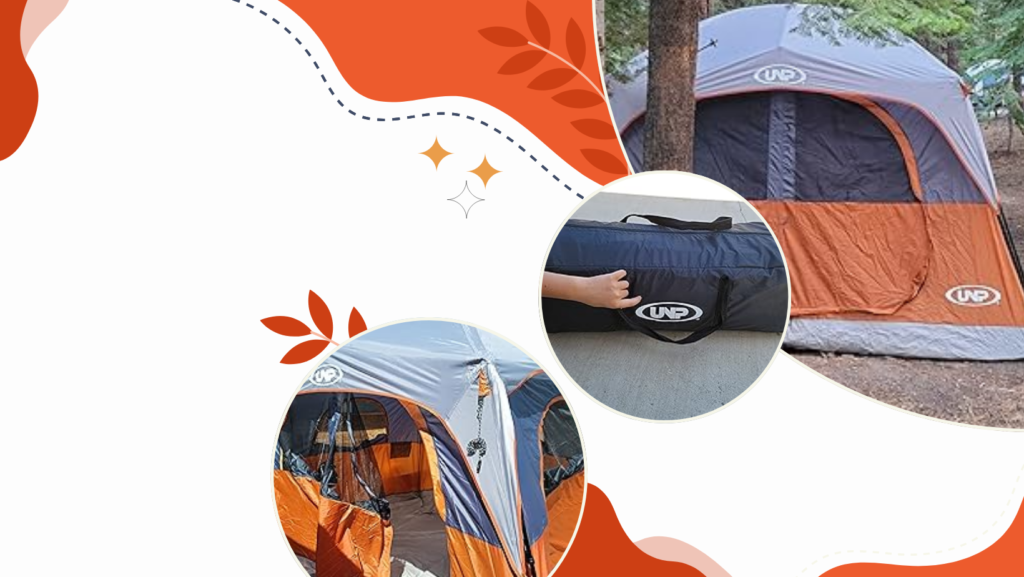As someone who’s spent countless nights under the stars and woke up to the soothing sound of birds singing, I’ve learned that camping isn’t just about escaping to the wilderness; it’s about immersing yourself in the beauty of nature and learning how to protect it. Over the years, I’ve witnessed the devastating effects of waste on our planet, especially in our beloved outdoors. This realization sparked my journey toward adopting zero-waste camping practices.
I’ll share my personal experiences and tips on creating a zero-waste camping gear checklist. Not only will I explain why it’s crucial to embrace sustainability, but I’ll also provide actionable steps to reduce your environmental impact while having an unforgettable camping trip.

Why Zero-Waste Camping Matters: A Personal Story
One of my earliest camping trips was in the breathtaking Cascades, nestled in the heart of the Seattle Metropolitan Area. The dense evergreen forests, clear lakes, and jagged mountain peaks left me in awe. But as I explored deeper into the wilderness, I began noticing small but jarring reminders of human presence: plastic wrappers, half-buried cans, and discarded food packaging. It was disheartening.
That trip was a turning point. I realized that while we are all here to enjoy the wonders of nature, we also bear a responsibility to leave it undisturbed. This is when I made the commitment to adopt a zero-waste camping lifestyle. Now, every trip I take is carefully planned to minimize waste and ensure I leave no trace behind.
Core Topic Discussion: What is Zero-Waste Camping?
Zero-waste camping is about minimizing your environmental footprint by reducing waste to the absolute minimum during outdoor activities. It’s an intentional way of camping that focuses on reusing, recycling, and composting, while eliminating single-use plastics and other harmful waste.
When I first started zero-waste camping, I quickly realized that it wasn’t just about packing the right gear—it was about making conscious decisions at every step: from choosing eco-friendly camping gear to preparing zero-waste meals. The goal is simple: reduce waste, use sustainable products, and leave nature as you found it.
Expert Tips & Actionable Advice for Zero-Waste Camping
Whether you’re a seasoned camper or a first-timer, these tips will help you adopt a zero-waste camping approach that’s both practical and sustainable.
1. Opt for Reusable Camping Gear
- Zero Waste Tent & Sleeping Gear: Traditional tents and sleeping bags can sometimes come with unnecessary waste, like packaging and disposable components. Choose tents made from durable, long-lasting materials that don’t require frequent replacements. I personally use a high-quality, compact tent made of sustainable materials that has been with me for years!
- Reusable Cookware & Utensils: Instead of using disposable plates and cutlery, invest in a good set of reusable plates, cups, and utensils. Stainless steel, bamboo, or titanium are excellent eco-friendly options that last longer and are lightweight.
- Water Bottles and Filters: One of the easiest ways to reduce waste is by carrying a reusable water bottle and a portable water filter. I always carry a LifeStraw filter, which helps me stay hydrated without relying on single-use plastic bottles.
2. Pack Zero-Waste Camping Meals
- Bulk Ingredients: Instead of packing individual servings wrapped in plastic, buy in bulk and use reusable bags. I’ve found that mason jars are great for packing pasta, rice, or grains—making it easier to portion out meals without creating waste.
- Zero-Waste Snack Ideas: Bring along fresh fruits and veggies, nuts, and homemade energy bars to snack on. I love to pack homemade granola or trail mix in reusable containers. It’s simple, lightweight, and eco-friendly.
- Compostable Waste Bags: For organic waste, always pack compostable bags that can be safely disposed of in composting bins once you’re back in civilization.
3. Use Eco-Friendly Toiletries
- Biodegradable Soap: Traditional soaps can contain harmful chemicals that affect the environment, especially in rivers and lakes. I use biodegradable soap for cleaning my dishes and myself, ensuring it won’t pollute water sources.
- Recycled Toilet Paper: Opt for toilet paper made from recycled materials. It’s lightweight, takes up minimal space, and is better for the environment.
4. Practice Leave No Trace Principles
The Leave No Trace principles are essential for minimizing your impact on the environment. These guidelines encourage campers to leave the area as they found it, ensuring wildlife, plants, and other campers are not disturbed. A key practice is cleaning up every piece of trash, even if it isn’t yours, which I always try to do when exploring the backcountry.

Common Questions & Misconceptions About Zero-Waste Camping
Is zero-waste camping expensive?
Not at all! While eco-friendly gear can be more expensive upfront, it’s an investment that pays off over time. Durable, reusable products save you money in the long run because you won’t need to replace disposable items repeatedly. Plus, you’re helping reduce the environmental cost of mass production and plastic waste.
Can I really go zero-waste while camping in remote areas?
Yes, you absolutely can. The key is planning ahead. I’ve successfully camped in backcountry areas while carrying minimal waste, using reusable gear, and preparing sustainable meals. Just be sure to pack everything you’ll need, including a waste disposal plan for when you leave.
What do I do with food waste while camping?
Food waste should be composted or packed out, depending on where you are. Always check with local regulations regarding composting and disposal to ensure you’re following the guidelines of the area you’re camping in.
Recommended Tools, Resources & Product Insights
As someone who’s deeply invested in zero-waste camping, I’ve tested many products that have proven to be reliable and eco-friendly. Here are some of my top recommendations:
- Tent: Big Agnes Copper Spur HV UL – Lightweight and durable, this tent has lasted me for years and is made with sustainability in mind.
- Cooking Gear: Snow Peak Titanium Cookset – Compact, durable, and made from sustainable materials, this set is perfect for zero-waste cooking.
- Water Filter: LifeStraw Personal Water Filter – A must-have for drinking water on the go, this filter allows you to reduce bottled water waste while ensuring clean drinking water.
- Composting Bags: BioBag Compostable Trash Bags – Great for packing out food scraps and other compostable materials.
- Reusable Food Containers: PlanetBox Rover Lunchbox – I use these for storing snacks and meals—they’re durable, easy to clean, and keep food fresh.
Case Study: How Zero-Waste Camping Transformed My Wilderness Experience
One of the most memorable camping trips I took was a three-day backcountry hike through Olympic National Park. Armed with zero-waste camping gear and meals prepared at home, I was able to fully immerse myself in the wilderness without worrying about waste.
Before adopting a zero-waste approach, I’d find myself carrying excess packaging, plastic, and other non-biodegradable waste. However, on this trip, I found peace in knowing everything I brought with me was either reusable or compostable. When I returned, I had zero trash to dispose of—just a deep sense of satisfaction and a renewed commitment to sustainability.
Conclusion
Adopting a zero-waste camping approach is more than just an environmentally conscious choice—it’s a lifestyle that allows you to enjoy the outdoors in its purest form. By choosing sustainable gear, minimizing waste, and following eco-friendly practices, you can ensure that your camping trips leave a positive impact on the planet.
Are you ready to take the plunge into zero-waste camping? Let me know your thoughts in the comments below, and feel free to share your own tips or favorite eco-friendly camping gear!

Melody Smith is a passionate writer, outdoor enthusiast, and camping expert based in the Seattle Metropolitan Area. With a deep love for nature and adventure, she shares her personal experiences, tips, and insights on MyCampingPro.com. A seasoned camper and traveler, Melody combines her creative background in design and writing with her love for the great outdoors, offering practical advice and inspiring stories to help others make the most of their outdoor experiences. When she’s not exploring the wilderness, you can find her painting, collecting vintage treasures, or diving into a good book.
